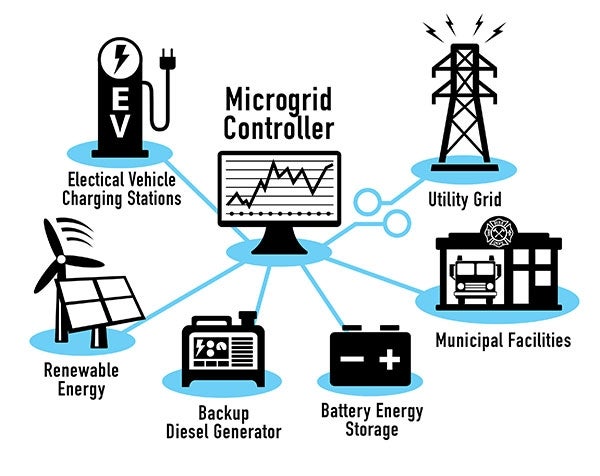Microgrids
In 2023, the City broke ground on the installation of microgrids at municipal facilities. These microgrids - standalone power grids that allow a facility or set of connected facilities to “island” or isolate from the grid and continue to operate during grid outages, relying on power stored onsite – are part of a pilot project that will help the City reduce energy consumption and greenhouse gas (GHG) emissions, provide resiliency during grid outages, and save on energy costs.
Partially funded by the California Energy Commission’s Advanced Solar Emergency Microgrids Grant, the project is being financed through a 25-year Energy Management Services Agreement.

Benefits
- Enables dynamic shifting of a facility’s energy load.
- Allows for energy use optimization.
- Provides clean power and community resiliency during grid outages.
- Increases resilience, meaning the ability to prepare for and adapt to changing conditions, and withstand and recover rapidly from disruptions.
- Serves similar functions as a backup diesel generator, but without the associated GHG emissions.
- Reduces energy costs - Expected savings is $6 million over 25 years!
- Supports 2022 Climate Action Plan (CAP), which sets a goal of reducing energy at municipal facilities by about 35% from a 2010 business-as-usual baseline by 2035.
- Supports Municipal Energy Strategy (MES), which furthers the CAP goal so that by 2035, all energy consumed by City facilities is from renewable sources.
The locations were prioritized for microgrid installation based on their ability to serve communities during grid outages, either as shelters or supply distribution centers. All are expected to be complete by end of 2025.

